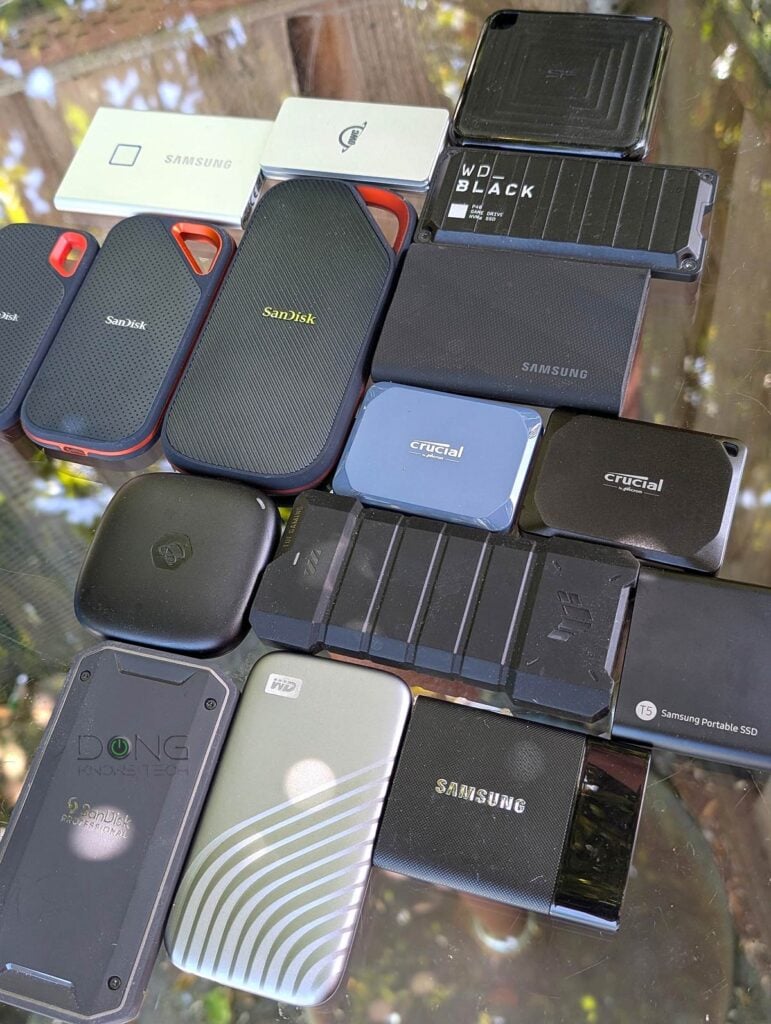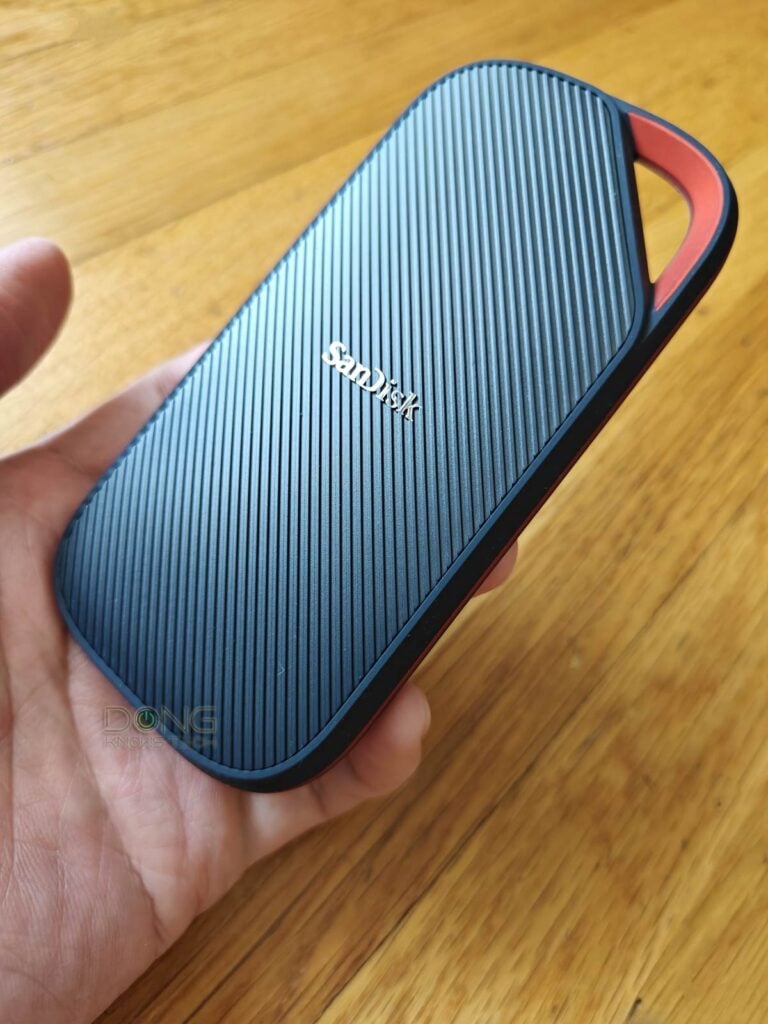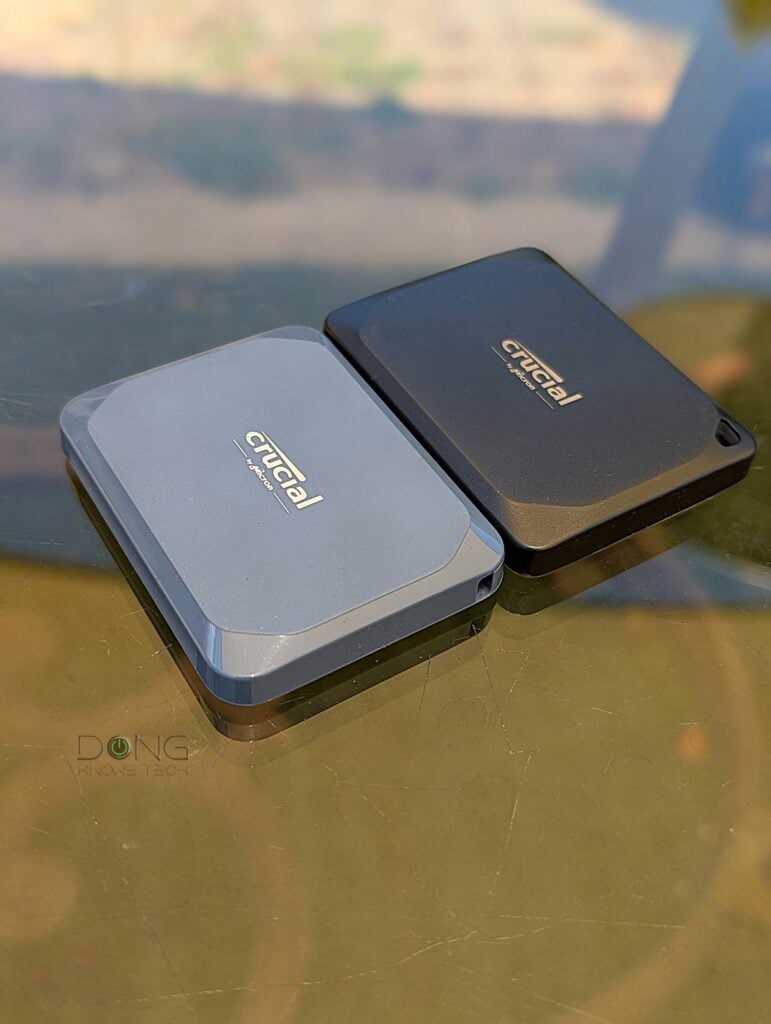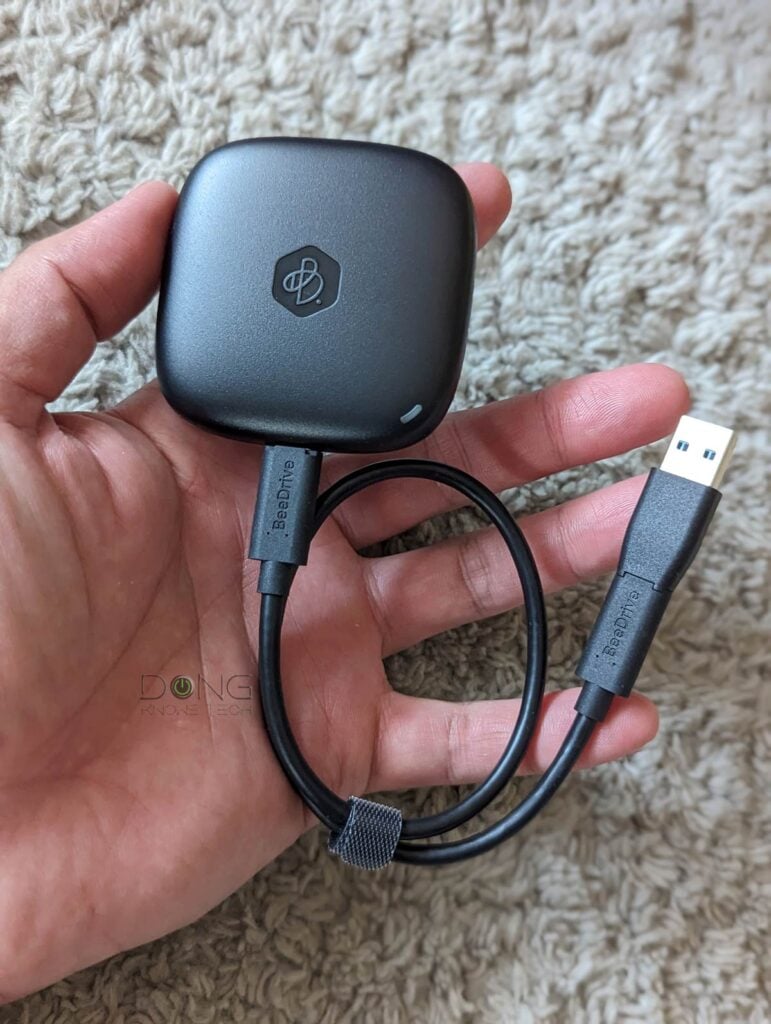Portable SSDs (solid-state drives), as the name suggests, are fast storage devices that, nowadays, connect to a host via a USB-C port.
These are convenient storage devices that can carry a large amount of data from one computer to another. Or you can use one as an offline backup—tuck it away, and nobody can hack into your essential information.
This post includes the best SSD-based portable drives I’ve tested. There are quite a few of them—more than enough for you to find one that goes well with your situation. If you’re looking for purpose-built storage devices, including desktop options, check out this top five of external drives instead.
Dong’s note: I first published this post on May 26, 2025, and last updated it on November 22, 2025.

Best portable SSDs: The top five and their alternatives
This top-five list is sorted in the rating order, with the best being shown first—the numbers are the hardware’s ranking. These drives will work for anyone, from casual users to prosumers to gamers.
When applicable, I also include similarly excellent alternatives in each case. Any of these will serve you well. It’s a question of how well, and that requires some reading—check out the full review!
Top 5 best portable SSDs
 |  |  |  |  | |
| Name | SanDisk Extreme PRO with USB4’s Rating | Crucial X10 Portable SSD’s Rating | Synology BeeDrive’s Rating | TUF Gaming Plus’ Rating | Samsung T9’s Rating |
| Price | – | – | – | – | – |
| Rating | |||||
| Description | |||||
| Statistics | |||||
| Buy this product |
1. Sandisk Extreme Pro with USB4

The SanDisk Extreme PRO with USB4 is the only USB4 portable SSD on this list. It’s the continuation of Sandisk’s Extreme lineup that started almost a decade ago. The drive is super-fast, but it’s comparatively bulky, about the same size as an iPhone 15.
Similar alternatives:
- SanDisk Desk Drive
- WD Black P50 Game Drive
- WD BLACK Game Drive
- SanDisk Extreme Pro
- WD Black D30 Game Drive SSD
- SanDisk Extreme
- WD My Passport SSD
- Shopping link: Compare these drives on Amazon!
SanDisk Extreme PRO with USB4's Rating

Pros
USB4 (Thunderbolt 4) support with top real-world performance
Rugged and convenient design
Universally supported
Cons
A big bulky
No security or user-accessible features
A bit pricey
2. Crucial X10 (USB 3.2 Gen 2×2)

The Crucial X10 is an interesting portable drive. Despite the name, it’s actually a better version of the X10 Pro that came out in late 2023.
Without support for USB4, the X10 is not the fastest on the market, but it has an excellent combo of super-compact design, fast performance, and ample storage space.
Excellent and similar alternatives to consider:
- Micron Crucial X10 Pro
- Micron Crucial X9 Pro
- Micron Crucial X8
- Micron Crucial X6
- Shopping link: Compare these drives on Amazon!
Crucial X10 Portable SSD's Rating

Pros
Top USB Gen 3.2 2×2 performance
Compact and rugged design
Play and play with all platforms
Cons
No USB4 support, no USB-A cable or adapter included
Only a 3-year warranty
3. Synology BeeDrive (USB 3.2 Gen 2)

The Synology BeeDrive is quite different from others. Apart from being a typical portable SSD that’s super compact, it comes with an app and software that automatically back up your device’s content, which can come in handy in many situations.
Synology BeeDrive's Rating

Pros
Fast USB 3.2 Gen 2 performance
Robust and effective personal backup/sync solutions, thanks to the well-thought-out BeeDrive for Desktop and mobile app
Compact, practical design; runs cool
Cons
No hardware encryption, no macOS support, no option for system imaging, and users can't exclude sub-folders from a sync; the iOS app could be better
The BeeDrive mobile app only works within the local network; the desktop app doesn't work with third-party hardware
4. ASUS TUF Gaming Plus (USB 3.2 Gen 2×2)

The ASUS TUF Gaming Plus, represented by the AS1000 Plus, is a new line of portable SSDs made for gamers, rivaling the WD Black P50. As such, it proved to be of excellent value thanks to its top-notch performance and friendly price tags.
TUF Gaming Plus' Rating

Pros
Excellent performance with friendly pricing and a 5-year warranty
Rugged design with easy access to the internal drive
Compatible with all USB (and USB-C Thunderbolt) standards
Cons
No USB-A to USB-C cable or converter is included
No support for Android or iOS
5. Samsung T9 (USB 3.2 Gen 2×2)

The T9 is Samsung’s latest in its T series of portable SSDs and the first that features the USB 3.2 Gen 2×2 standard. It’s a fast drive with lots of options, including built-in security features. The drive is great overall as long as you can handle the fact it’s also a dirt magnet.
Similar alternative:
- Samung T7/Touch and Shield)
- Samsung T5
- Shopping link: Compare these drives on Amazon!
Samsung T9's Rating

Pros
USB 3.2 Gen 2×2 support to deliver top performance; compact and rugged design
Hardware encryption with effective password protection; excellent Samsung Magician 8.0 dashboard desktop software.
USB cables included; run cool
Cons
Expensive; dirt magnet
The Samsung Portable SSD Android app doesn't work at all.
Best portable SSDs: The final thoughts
All of the portable SSDs above are fast. However, none of them have built-in redundancy. This means if, for some reason, they fail, you’ll lose all the information they store.
So, while they are excellent for extra storage to hold backups, you’re advised not to use any of them to have the only copy of your important data. For data safety, at the very least, get more than one unit and use one as a backup for the other.



Just spotted the existence of the ‘MSI DATAMAG 40Gbps’ which is apparently using a PHISON U21 controller, DRAM-less design. MSI’s optimistic R/W specs are 4,000/3,500 but it’d be good to get a proper benchmark.
Hopefully 2026 is finally the year USB4 40Gbps and faster drives become widespread.
Is it me or has the Crucial X10 8TB Portable SSD taken a massive price cut on Amazon?
That happens often, James.
The ghost in the room is of course Thunderbolt 5 performance – 80 Gbit/sec. Plenty of m.2 SSDs match or cap that speed today.
Even for Thunderbolt 4 or USB4, an external m.2 enclosure seems like the better way to go. You can choose SSD, and you know what you get.
Also – as I understand it – 20 Gbit was never part of the USB3 standard. Support is limited. USB4 supports 20Gbit, but that doesn’t necessarily mean a USB 3.2 2×2 device will run at 20 Gbit on a USB4 port. It’s complicated.
That’s because USB4 is basically Thunderbolt 4, which doesn’t support USB 3.2 Gen 2×2, either. It’s complicated indeed, Lars, or simply just a big mess though still much better than what we had before.